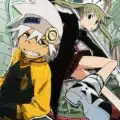
What is the role of storyboarding in anime production?
Creating anime is an intricate and multifaceted process that combines artistry, storytelling, and technology. If you’re wondering how do you make anime, you’re in the right place. This guide will explore the various stages involved in anime production, from conceptualization to final editing, offering insights into the skills and tools necessary for bringing animated stories to life.
Understanding Anime Production
Anime production is a complex process that involves multiple stages, each requiring specific expertise. To effectively understand how to make anime, it’s essential to dissect the stages of production, the key roles involved, and the technologies used.
The Stages of Anime Production
Pre-Production
The pre-production phase is where every anime begins its journey. This stage is critical as it lays the groundwork for the entire project. Here are the primary steps involved in pre-production:
- Used Book in Good Condition
- George Trombley (Author)
- English (Publication Language)
- 376 Pages - 08/22/2014 (Publication Date) - Learn From Zero (Publisher)
- Ken Fukuyama, Yuki Fukuyama (Author)
- English (Publication Language)
- 246 Pages - 10/11/2022 (Publication Date) - Independently published (Publisher)
- Used Book in Good Condition
- Sumiko Uo (Author)
- English (Publication Language)
- 6 Pages - 01/01/2005 (Publication Date) - QuickStudy (Publisher)
- Concept Development: This is the brainstorming phase where ideas are generated. Writers create the initial plot and characters, determining the overarching themes and messages of the anime.
- Scriptwriting: Once the concept is solidified, the script is written. Screenwriters delve deeper into the narrative, developing dialogue and scene descriptions. The script is a blueprint for the anime, detailing every aspect of the story.
- Character Design: Character designers create sketches and models of the characters, focusing on their appearance, clothing, and personalities. This is crucial because character designs affect audience engagement.
- Storyboarding: Storyboards are visual representations of the script. They outline how each scene will play out, shot-by-shot. Good storyboarding is fundamental to ensuring visual coherence in the anime.
- Art Direction: The overall aesthetic of the anime is determined during the art direction phase. This includes setting the color palette, backgrounds, and animation style, which contribute to the anime’s look and feel.
Production
Following pre-production, the project moves into the production phase, where the anime starts to take shape:
- Used Book in Good Condition
- George Trombley (Author)
- English (Publication Language)
- 376 Pages - 08/22/2014 (Publication Date) - Learn From Zero (Publisher)
- Ken Fukuyama, Yuki Fukuyama (Author)
- English (Publication Language)
- 246 Pages - 10/11/2022 (Publication Date) - Independently published (Publisher)
- Used Book in Good Condition
- Sumiko Uo (Author)
- English (Publication Language)
- 6 Pages - 01/01/2005 (Publication Date) - QuickStudy (Publisher)
- Animation: This is arguably the most labor-intensive step in creating anime. Animators bring the characters and scenes to life using both traditional hand-drawn techniques and modern digital tools. The animation process includes creating keyframes, in-betweens, and detailed movements.
- Voice Acting: Voice actors are cast for each character, adding personality and emotion to the narrative. Recording sessions are held where actors perform their lines, often requiring multiple takes to capture the right tone.
- Sound Design: Sound effects and musical scores play a pivotal role in enhancing the viewing experience. Sound designers meticulously craft the soundtrack, including opening themes and background scores that resonate with the viewers.
Post-Production
Once animation and sound are complete, the project enters the post-production phase:
- Editing: Editors compile all the animated scenes and audio tracks, ensuring the pacing of the anime aligns with the original vision. This is where final adjustments, transitions, and special effects are added.
- Quality Control: Every frame of the anime is scrutinized for inconsistencies, errors, or areas needing improvement. Quality control is integral to maintaining high standards, ensuring the final product meets industry expectations.
- Distribution and Marketing: After the anime is finalized, it must reach its audience. This stage involves devising marketing strategies, distributing content to streaming platforms, and planning promotional campaigns.
Key Roles in Anime Production
Understanding how do you make anime also requires knowledge about the various roles involved in the production team. Each role plays a significant part in ensuring the anime’s success.
- Director: The director oversees the entire production process, making crucial decisions regarding narrative, character development, and animation style.
- Writer: Writers develop the storyline and characters. Their work is foundational, as it guides the direction of the anime.
- Animator: Animators create the visual elements of the anime, bringing characters and scenes to life, often involving hundreds of hours of labor.
- Art Designer: Art designers contribute to the visual aesthetic, creating backgrounds and overall art direction that align with the anime’s theme.
- Sound Engineer: These professionals manage audio elements, ensuring voice acting and sound effects seamlessly blend with the animation.
Tools and Technologies for Anime Creation
In today’s digital age, a variety of technologies and tools are essential to the anime-making process. Understanding these tools will enhance your knowledge of how to make anime.
Digital Tools in Animation
- Animation Software: Programs such as Toon Boom Harmony, Adobe Animate, and Clip Studio Paint are popular among animators for creating 2D animations. For 3D animation, software like Maya and Blender is frequently used.
- Storyboarding Tools: Digital storyboarding applications help streamline the process. Tools like Storyboard Pro and even traditional programs like Photoshop can be used for creating visual scripts.
- Audio Editing Software: Audio production software such as Adobe Audition and Pro Tools is essential for recording and editing voice acting and sound effects.
Collaborative Platforms
Bringing together a diverse team requires effective communication tools. Platforms like Trello, Slack, and Asana can help manage projects, track progress, and facilitate discussions among team members.
Challenges in Anime Production
Creating anime is not without its challenges. It’s essential to be aware of potential obstacles and how to overcome them if you’re looking into how do you make anime.
Budget Constraints
Budget limitations can significantly impact the quality and scope of an anime project. Cost management is critical, as high-quality animation requires skilled labor and resources. To navigate this, producers often create a detailed budget and seek funding from studios or crowdfunding platforms.
Time Management
The anime production timeline can be demanding. Coordination among various departments is essential for timely completion. Implementing robust project management strategies can help alleviate time constraints and ensure the final product is delivered on schedule.
Creative Differences
With numerous creative minds working together, disagreements may arise regarding story direction or artistic choices. Clear communication and a strong vision from the director can help navigate these challenges.
Tips for Aspiring Anime Creators
If your interest lies in creating anime, consider the following tips to enhance your journey in understanding how do you make anime.
- Study Existing Works: Analyzing successful anime can provide insights into storytelling techniques, character development, and visual styles that resonate with audiences.
- Practice Your Art: Regular drawing and animation practice can greatly improve your skills. Online tutorials and art classes can be beneficial for beginners.
- Network with Professionals: Engage with other creators and industry professionals through forums, social media, or conventions. Building a network can open doors to collaboration and mentorship opportunities.
- Publish Your Work: Utilize platforms such as YouTube or Vimeo to share your animations. This can help gain feedback and attract potential collaboration opportunities.
- Stay Updated on Industry Trends: The anime industry is constantly evolving. Keeping abreast of new technologies, storytelling methods, and audience preferences will enhance your ability to create relevant and engaging content.
Conclusion
Creating anime is an art form that blends creativity, storytelling, and technical skills. Understanding how do you make anime encompasses exploring the stages of production, the various roles involved, and the challenges faced throughout the process. With dedication, practice, and a strong support system, aspiring creators can bring their unique animated visions to life.
If you wish to learn more about the intricacies of anime production, resources such as the Anime News Network and industry guideline sites offer excellent insights into trends and techniques in the anime world. Embrace the journey, and embark on your path to creating mesmerizing animations that entertain and inspire audiences worldwide.







